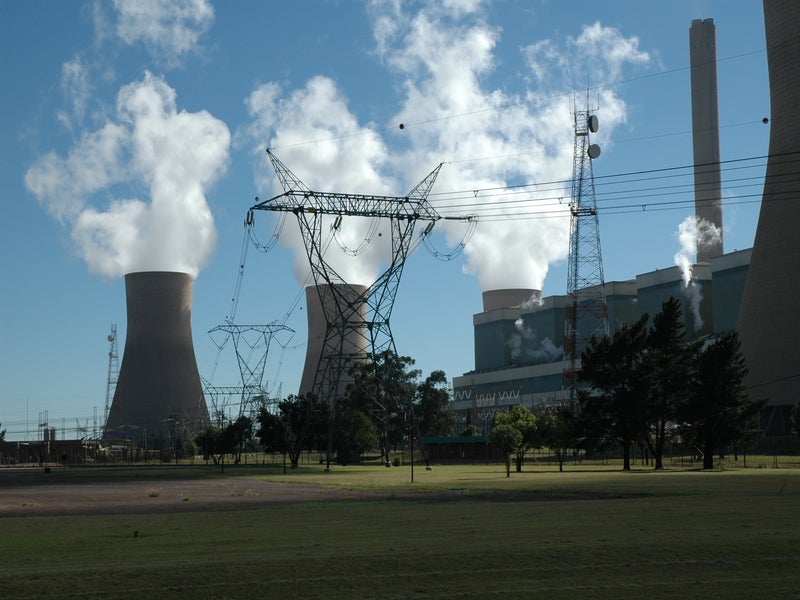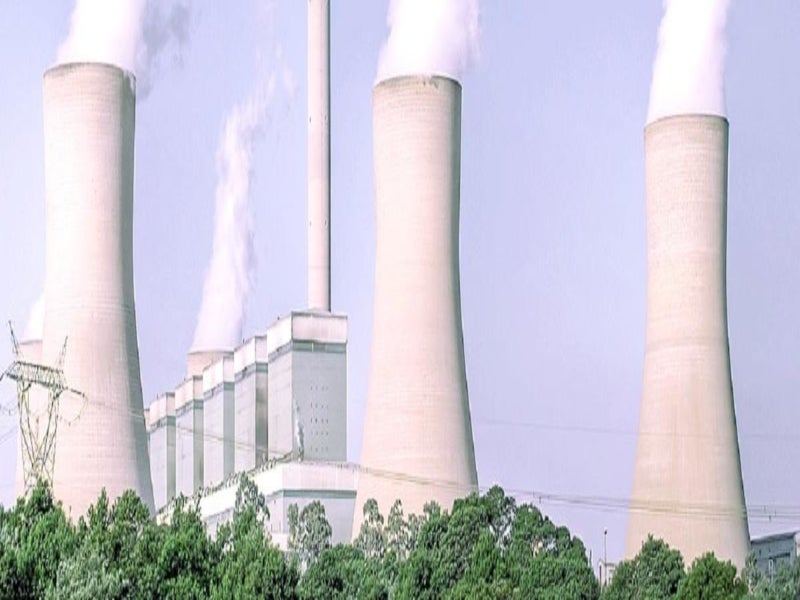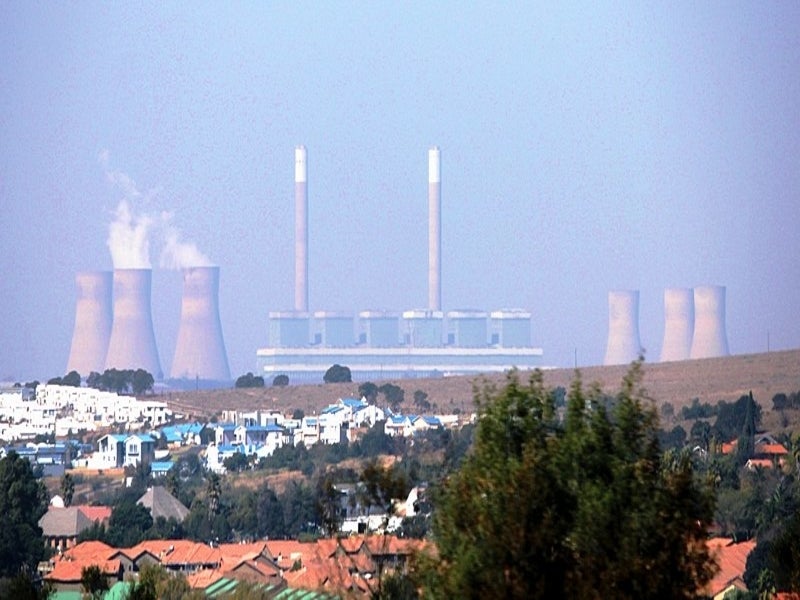Duvha power station is a 3,600MW coal-fired power plant located in South Africa. Fully commissioned in 1984, the base load power plant features six units of 600MW each. South African electrical utility Eskom is the operator of the plant.
Construction of the power station had begun in November 1975 and was completed over eight years with a total investment of R1.6bn ($128m). The first two units were commissioned in 1980, followed by the third unit in 1981, fourth in 1982, fifth in 1983, and the sixth unit in February 1984.
The power station received the NOSCAR status twice by the National Occupational Safety Association (NOSA).
Duvha power station location and coal supply
Duvha power station is located 15km east of the city of eMalahleni (formerly Witbank) in Mpumalanga province, South Africa.
The Witbank region is known as the power house of South Africa due to the availability of water and coal.
The power station receives coal from the nearby Duvha opencast mine via a 4.5km conveyor belt, whereas water required for the power generation can be sourced from the Vygeboom and Nooitgedacht dams as well as the Witbank and Grootdraai dams. It consumes 11.7 million tons (Mt) of coal a year, at the rate of 845,000t a month.
The site is accessible via the N12 and N4 national highways and linked with major cities such as Johannesburg, Pretoria, and the borders of Botswana and Mozambique.
Duvha power station details
Duvha power station is a base-load plant consisting of six units of 600MW each. Three of the units use electrostatic precipitators with sodium trioxide injection. The remaining three feature ABB fläkt Optipulse pulsejet fabric filters. The three units were retrofitted with pulsejet fabric filters in 1993.
The Optipulse pulsejet fabric filter is divided into four isolatable compartments, each containing 6724 acrylic dralon T bags.
The power plant is equipped with 667MVA generators, which produce 600MW each at full load. It consists of six cooling towers with a total thermal load capacity of 19,000GJ/h. Each tower amounts to an evaporation of 30ml a day at full load.
The plant also features dual-pressure, surface type condensers.
Power generation at Duvha power station
The Duvha power plant contains six Benson type boilers running as individual entities with separate controls and instrumentation.
Coal is fed to the mills from the boiler bunkers, which is then pulverised by steel balls or rollers in the mills. The coal is supplied by Ingwe, under an agreement signed in 1995.
Each boiler has six mills and can process between 250t and 300t of coal an hour at full capacity to generate 507kg/s of steam.
The highly purified and demineralised feedwater moves uninterrupted through the boiler, turbine, condenser, and back to the boiler in a continuous circuit. The feedwater evaporates in the path and the produced steam gets superheated to a temperature of 540°C and a pressure of 17.1MPa.
The steam bypasses the turbines, flowing into the main condenser. Two electric pumps of 13MW supply the feedwater to the boilers. Each boiler offers an efficiency of 93.9% at maximum continuous rating.
Each boiler-turbine set has a condenser with a heat exchange capacity of approximately 400MW.
Control systems at Duvha power station
The plant has three control rooms, where the operators can perform functions including start-up, shutdown, normal operations, and emergency operations. The operators communicate with ESCOM control centres connected to the integrated transmission network.
The Duvha power station is equipped with original human machine interface (HMI) solution based on Process Portal B/Windows 2000. The system runs on Symphony Plus technology.
The plant is also equipped with Harmon INFI 90 process control system with 17 power conditioning units (PCUs), bridge controllers (BRC100), multi-function processors (MFP), and block inputs/outputs.
The main operating and alarm systems are monitored by a data-logging computer, thus continuously providing information on screens and printers.
Contractors involved
The turbines installed at the power plant were manufactured by GEC Turbo-Generators, while ABB manufactured the process control system and ABB Power Tech manufactured the bag filters for the first three units.
The boilers were supplied by SteinMüller (Africa), whereas the electrostatic precipitators were made by Lurgi and the generator transformers were supplied by ASEA Electric.
Earthworks were performed by Grinaker Construction, while civil engineering works were contracted to LTA Construction and steelwork was subcontracted to Dorbyl.
Hamon Sobelco was the contractor for the cooling towers construction, while the contract for chimney one was awarded to Monanhan and Frost and that for chimney two to Murray and Roberts (Transvaal). Huberts Davies performed the cabling works, while Mather and Platt provided the fire control system.
Foster Wheeler was responsible for the water treatment plant, while Satec Hudamec was responsible for the sewage plant.
JL Lining and Construction was contracted for works at the ash conveyor gantry, while Sidima was appointed for the replacement of generator protection and switch gears.
DB Thermal installed turbine loop pipes at the power station. Margaret Rawics undertook the landscape planning and design for the site.






